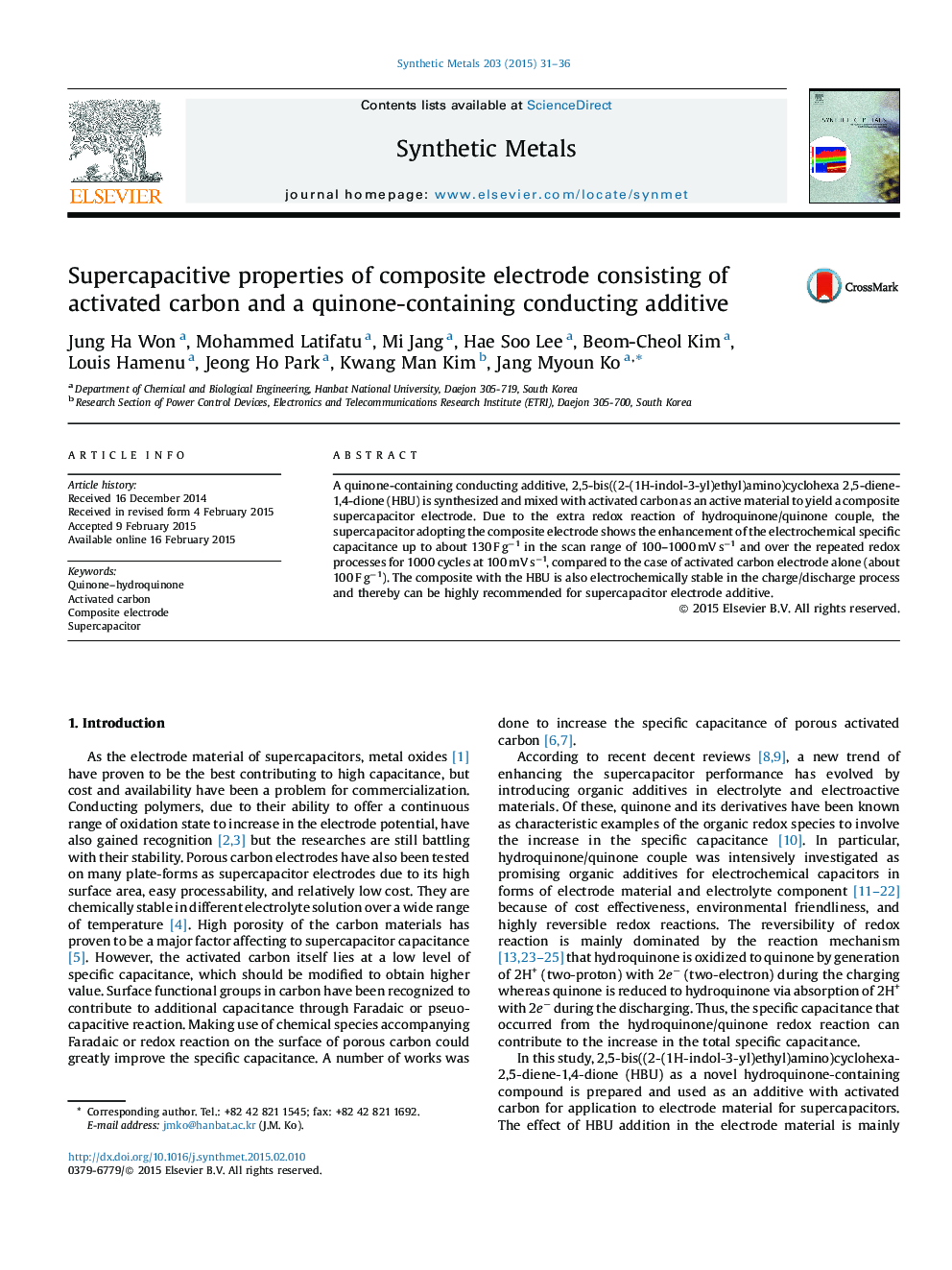| Article ID | Journal | Published Year | Pages | File Type |
|---|---|---|---|---|
| 1440554 | Synthetic Metals | 2015 | 6 Pages |
•2,5-Bis((2-(1H-indol-3-yl)ethyl)amino)cyclohexa-2,5-diene-1,4-dione(HBU) is prepared.•Performance of the supercapacitor using carbon and HBU is improved.•The composite electrode is electrochemically stable in the redox process.
A quinone-containing conducting additive, 2,5-bis((2-(1H-indol-3-yl)ethyl)amino)cyclohexa 2,5-diene-1,4-dione (HBU) is synthesized and mixed with activated carbon as an active material to yield a composite supercapacitor electrode. Due to the extra redox reaction of hydroquinone/quinone couple, the supercapacitor adopting the composite electrode shows the enhancement of the electrochemical specific capacitance up to about 130 F g−1 in the scan range of 100–1000 mV s−1 and over the repeated redox processes for 1000 cycles at 100 mV s−1, compared to the case of activated carbon electrode alone (about 100 F g−1). The composite with the HBU is also electrochemically stable in the charge/discharge process and thereby can be highly recommended for supercapacitor electrode additive.
